Introduction
Quail eggs, though diminutive in size, pack a punch of flavor and nutrition, making them a cherished ingredient in gourmet cuisine worldwide. Their delicate, speckled shells house yolks that are richer and creamier than chicken eggs, offering a luxurious texture to any dish. One of the most delightful ways to showcase these tiny treasures is by stuffing them with a vibrant mixture of vegetables, creating a bite-sized masterpiece that’s as visually stunning as it is delicious. This recipe for stuffed quail eggs with vegetables is a testament to the idea that elegant appetizers need not be complicated. Perfect for brunch spreads, cocktail parties, or even a cozy family dinner, this dish combines simplicity with sophistication. With minimal ingredients and straightforward steps, even novice cooks can impress guests with this crowd-pleasing treat. Let’s dive into the art of crafting these delicate delights, where earthy vegetables meet creamy yolks in a harmonious embrace.
Why Choose Stuffed Quail Eggs?
Beyond their aesthetic appeal, stuffed quail eggs offer a nutritional powerhouse. Rich in protein, vitamins B12 and D, and selenium, quail eggs are a smart addition to any diet. When paired with fresh vegetables, this dish becomes a balanced source of fiber, antioxidants, and essential minerals. Moreover, their petite size makes them ideal for portion control, allowing diners to savor the flavors without overindulging. Whether you’re hosting a gathering or seeking a creative weeknight snack, these stuffed eggs bridge the gap between indulgence and health-conscious eating.
Ingredients: A Symphony of Simplicity
To embark on this culinary adventure, gather the following ingredients:
- 24 fresh quail eggs (look for unbroken shells and uniform size)
- 1/2 cup mixed vegetables (finely diced: carrots, peas, corn, and red bell pepper)
- 1/4 cup red onion, minced
- 2 garlic cloves, grated
- 1/4 cup fresh parsley, chopped
- 1/4 cup Parmesan cheese, grated (or nutritional yeast for a vegan twist)
- 1/4 cup panko breadcrumbs (plus extra for coating)
- 1 large egg, beaten (for binding)
- 2 tbsp olive oil
- Salt and black pepper to taste
- Optional: A pinch of red pepper flakes or smoked paprika for heat
Equipment Essentials
- A medium saucepan for boiling eggs
- A slotted spoon for gentle handling
- Mixing bowls
- Baking sheet lined with parchment paper
- Piping bag or small spoon for stuffing
- Oven or air fryer (for baking)
Step-by-Step Guide
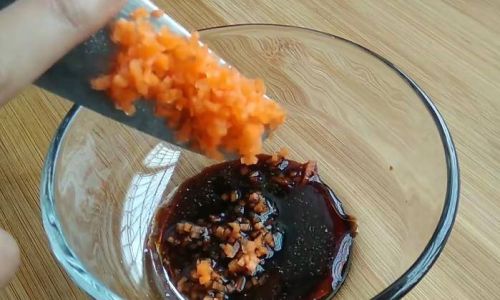
Boiling the Quail Eggs
The foundation of this recipe lies in perfectly cooked quail eggs—soft yet firm, with yolks that are velvety but not dry. Begin by placing the eggs in a single layer in a saucepan. Cover them with cold water, ensuring there’s about an inch of water above the eggs. Bring the water to a gentle simmer over medium heat. Once bubbles begin to rise, set a timer for 3 minutes for a soft yolk or 4-5 minutes for a firmer texture. Avoid boiling vigorously, as this can crack the delicate shells.
Pro Tip: Add a teaspoon of salt to the water. This not only seasons the eggs but also prevents the shells from cracking by raising the water’s boiling point slightly.
Shocking and Peeling
As soon as the timer dings, transfer the eggs to an ice bath using a slotted spoon. This sudden cold shock halts the cooking process and makes peeling easier. Let them sit for 5 minutes before peeling.
Peeling quail eggs can be fiddly, but patience rewards. Gently tap each egg on the counter to crack the shell all over, then roll it between your palms to loosen the membrane. Peel under running water to wash away tiny shell fragments. Set the peeled eggs aside.
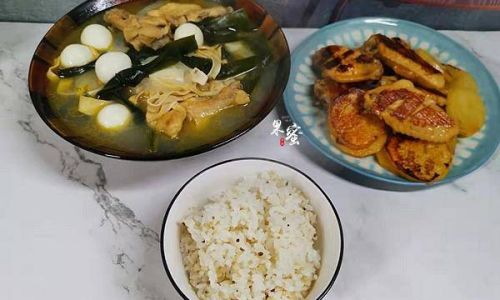
Preparing the Vegetable Filling
While the eggs cook, sauté the vegetables to mellow their raw edge and concentrate their flavors. Heat olive oil in a skillet over medium heat. Add the minced red onion and garlic, sautéing until fragrant and translucent (2-3 minutes). Stir in the diced carrots, peas, corn, and bell pepper. Cook for 5-7 minutes until tender but still vibrant. Remove from heat and let cool slightly.
In a mixing bowl, combine the sautéed vegetables with Parmesan cheese, panko breadcrumbs, chopped parsley, salt, pepper, and a pinch of red pepper flakes (if using). The mixture should hold together when pressed but not be overly wet. Adjust seasoning to taste.
Stuffing the Eggs
Slice each quail egg in half lengthwise using a sharp knife. Gently remove the yolks and add them to the vegetable mixture. Mash the yolks into the veggies, creating a cohesive filling. For a smoother texture, use a fork; for rustic charm, leave it chunky.
Using a piping bag fitted with a star tip or a small spoon, fill each egg white half generously with the mixture. Mound it slightly for an attractive presentation.
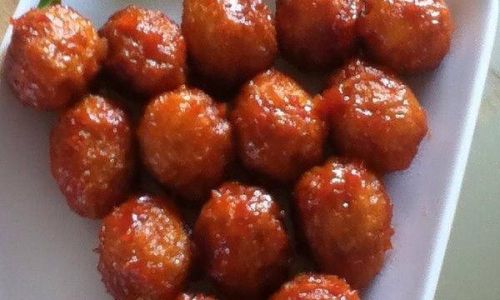
Coating and Baking
Preheat your oven to 375°F (190°C). Dip each stuffed egg half into the beaten egg, allowing excess to drip off, then coat lightly in panko breadcrumbs. This dual coating ensures a golden, crispy exterior. Arrange the eggs on a baking sheet.
Alternative Method: For a lighter option, air fry at 350°F (175°C) for 8-10 minutes until crisp.
Bake for 12-15 minutes until the breadcrumbs turn golden brown. Keep an eye on them to prevent burning.
Serving and Garnishing
Transfer the baked eggs to a serving platter. Garnish with a sprinkle of smoked paprika, a drizzle of balsamic glaze, or microgreens for an elegant touch. Serve warm or at room temperature.
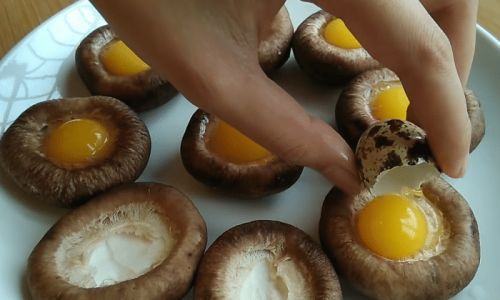
Pairing Suggestions
- Beverages: Pair with a crisp Sauvignon Blanc, a fruity rosé, or a sparkling lemonade for non-alcoholic options.
- Accompaniments: Serve alongside a fresh arugula salad, roasted cherry tomatoes, or crusty baguette slices.
Variations and Customizations
The beauty of this recipe lies in its adaptability. Here are ways to tailor it to your taste:
- Spicy Kick: Add minced jalapeño or a dash of hot sauce to the filling.
- Mediterranean Twist: Incorporate sun-dried tomatoes, olives, and feta cheese.
- Herb-Infused: Experiment with dill, chives, or basil for a different flavor profile.
- Vegan Version: Swap eggs with aquafaba (chickpea brine) and use vegan cheese.
Troubleshooting Common Issues
- Sticky Peels: If peeling proves challenging, try adding baking soda to the boiling water—it raises the pH, making shells slip off easier.
- Soggy Filling: Ensure excess moisture is drained from vegetables. If needed, add an extra tablespoon of breadcrumbs.
- Uneven Baking: Rotate the tray halfway through cooking for even browning.
Storage and Make-Ahead Tips
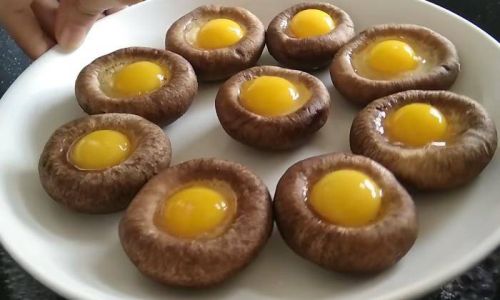
- Refrigeration: Store unbaked, stuffed eggs in an airtight container for up to 24 hours. Bake just before serving.
- Freezing: Avoid freezing, as the texture may become watery.
- Reheating: Warm in a 300°F (150°C) oven for 5 minutes to restore crispness.
The Cultural Tapestry of Stuffed Eggs
Stuffed eggs, or œufs mimosa, have graced European tables since the Middle Ages. Originally, they were a way to use leftover hard-boiled eggs, with yolks mixed with herbs and mustard. The quail egg variant gained popularity in French and Russian cuisine, symbolizing luxury and refinement. Today, they’re a staple at buffets and tapas bars globally, evolving into endless creative iterations.
Nutritional Breakdown (Per Serving: 6 halves)
- Calories: 120
- Protein: 7g
- Fat: 8g
- Carbohydrates: 6g
- Fiber: 1g
- Vitamins: A, B12, D
- Minerals: Iron, Selenium
Conclusion
Stuffed quail eggs with vegetables are more than just a recipe—they’re a celebration of culinary ingenuity. By marrying humble ingredients with meticulous technique, even the simplest dish can ascend to gourmet status. This recipe demystifies the process, proving that elegance need not be elaborate. Whether you’re a seasoned cook or a curious newcomer, these bites invite creativity and reward effort. So, the next time you seek a dish that wows the palate and the eyes, remember: sometimes, the smallest creations hold the greatest delight. Roll up your sleeves, embrace the rhythm of the kitchen, and let these quail eggs become your newest signature appetizer. Bon appétit!
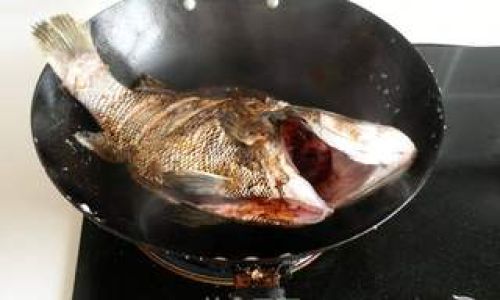
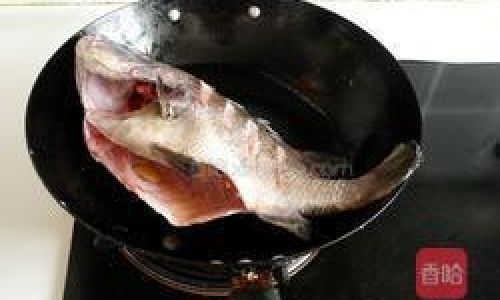
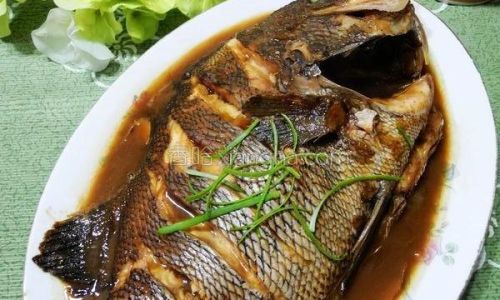
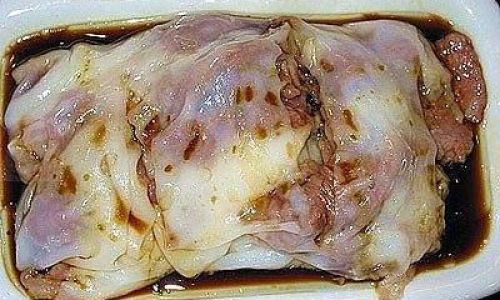
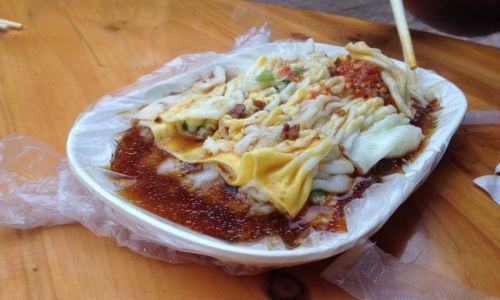
0 comments